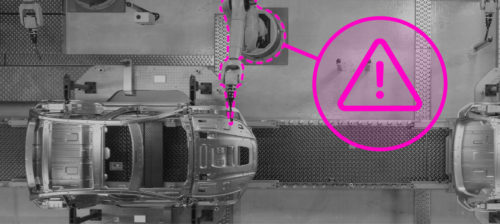Critical thinking: harnessing brainpower to achieve bottom-line results
A high IQ, academic credentials, or technical knowledge doesn't always guarantee success on the job.
A high IQ, academic credentials, or technical knowledge doesn’t always guarantee success on the job.
In 1993, Chrysler President Robert Lutz was visiting a Jeep Cherokee plant when he encountered a group of high-level product engineers discussing a problem. It seemed that the padded sun visors on the vehicles were bursting open at the seams after delivery. The engineers were developing a plan to reengineer the sun visor, a process that would require a month or two for redesigning and testing. After that, the suppliers would have to tool up for the new design.
Lutz began asking some basic questions: “How long had they been building the Cherokee?” (9 1/2 yr was the answer.) “Had they ever changed the design of the sun visor?” (No, it was the same design they had started with.) “When did the sun visors start bursting open?” (Complaints had started 3 mo ago and had become epidemic.)
Then Lutz asked one more simple question: “Have we ever asked ourselves why the visors were fine for nearly 9 1/2 yr and then suddenly began popping open?” The highly-educated, highly-intelligent engineers had to confess that, no, they had never asked that question.
Lutz suggested that they go back to the supplier and ask if he had changed anything recently. They did and learned that one of the tools the supplier was using had begun to wear out. The tool was replaced, the visors stayed shut. A great deal of time, money, and customer good will were saved.
The kind of thinking Robert Lutz used in this situation is known as “critical thinking” or “applied thinking.” Such thinking involves applying a systematic, rational thought process to sort out and resolve daily concerns. It relies more on discipline than on knowledge. And anyone can obtain better on-the-job results by engaging in it.
Yet, the responses to a survey conducted by our firm last year indicate that organizations often ignore critical thinking. Some 62% of both hourly workers and managers surveyed said that their organizations operate on half or less of their available brainpower. Several other disturbing statistics were revealed by the survey: 50% of workers and 44% of managers believe their organization does not define issues before addressing them; 66% are pressured to take action even if they don’t know the cause of a problem; and 54% of workers and 44% of managers say their organizations don’t always have a backup when their original plan fails.
Why is such an important skill not only neglected, but often discouraged? Survey respondents identified a number of barriers to critical thinking. The most common were lack of training, time pressure, insufficient information, fuzzy roles and responsibilities for decision making, and no incentives or rewards for thinking critically about on-the-job concerns.
But the picture is not completely bleak. In our experience in consulting work, we have seen many examples of innovative, effective ways in which organizations have broken through these barriers and harnessed the brainpower of their employees. The sun-visor incident convinced Robert Lutz that Chrysler employees lacked some very fundamental thinking skills. He and CEO Robert Eaton agreed to make one critical thinking process — problem solving — a core competency for all workers.
After training 40,000 people, they organized them into problem-solving teams that were encouraged to use the systematic process they had learned. As a result, Chrysler’s problem-solving success rate went way up. The success, like that of many other organizations, was in large part a result of top management’s commitment to teach skills, then turn those skills into habits.
In another company, a plant manager who had been trained to set priorities in a systematic, rational way began holding morning meetings. Each attendee was expected to bring specific data on the seriousness, urgency, and growth potential of each issue in his area. This process is very different from those used in organizations where the tyranny of the urgent is the driving force. Carrying out a systematic analysis ensured that as many resources as were needed were immediately allocated to the most critical issues. Participants were highly motivated to bring the data and to play an energetic role in the process.
In other organizations, skills are turned into habits by using process facilitators, employees with extensive training in systematic problem solving, decision making, and planning. These people facilitate meetings and keep others on track as they learn to apply their new skills in the real world.
In one instance, top managers acted as process facilitators, with a twist. After being trained in critical thinking, they did not mandate that their subordinates also be trained. Instead, they used what they had learned in the presence of these people. This approach aroused the interest of subordinates and showed that top management valued these skills. Before long, managers on all levels were clamoring for training in critical thinking. By using this approach, the company began to build habits, instead of just offer training courses.
One other component essential to successful thinking is that the people affected by the outcome of the thinking process must be involved in it consistently. They are the ones who have the experience and information needed to complete a comprehensive, well-thought-out analysis. And they are the ones who will implement the results.
In one company, the manager found that no thought had been given to potential problems by the builders of the plant. Instead of going back to them, he assembled his engineering staff — the people who worked in the plant day in and day out. He gave them access to all the information they requested and together they developed a comprehensive preventive and contingency plan that he was confident covered all the bases.
People learning to use new skills must be allowed to try, even if they fail, over and over until they become proficient. It is often hard for managers to be patient, especially when the clock is ticking and the line is running. But, as one survey respondent pointed out, “It seems we never have time to do it right the first time, but we always have time to do it over.” Managers must remind themselves that the time invested in employees’ ability to think critically pays for itself many times over when they become proficient in these vital skills.
Finally, nothing stifles thinking more than letting it go unnoticed. Organizations most successful in getting employees excited about and involved in problem solving and decision making are those that reward success. And the more public the reward, the better. When employees solve a problem, they should be given full credit for it. When possible, the contribution should be translated into dollars-and-cents savings. Some plants have a “Wall of Fame,” displaying the pictures of the successful employees and a short description of their applications.
Begin tapping into your employees’ brainpower right now! Give them the skills they need, expect them to use those skills as often as possible, and reward their efforts. You’ll be amazed at the results.
Doug Wilson is a practice leader in the management consulting firm of Kepner-Tregoe, Inc. He specializes in helping organizations build and apply critical thinking skills by resolving real-life issues. Previously, Wilson was a private management consultant who assisted organizations in building their employees’ leadership skills. The international organizational development and management consulting firm specializes in helping clients enhance their employees’ ability to apply critical thinking skills on the job.
Start — and keep — your people thinking
1 Train employees throughout the organization in critical thinking.
2 Build opportunities to use these skills into the daily work routine. Skills not used are lost.
3 Involve in the analysis all who are impacted by a problem, decision, or plan. They are the ones with the experience and the ones who must live with the outcome.
4 Make sure critical thinkers have access to all the information they need to do the job.
5 Allow for some failure. People punished for failing will stop trying.
6 Reward success publicly. Success and enthusiasm are contagious.
7 Reflect the desired thinking skills in the way you behave and the questions you ask. Why should employees put thought into their jobs if management doesn’t?
8 Be patient. Radical change doesn’t occur overnight. It takes from 3 to 7 yr to change the culture of an organization.
Do you have experience and expertise with the topics mentioned in this content? You should consider contributing to our CFE Media editorial team and getting the recognition you and your company deserve. Click here to start this process.





